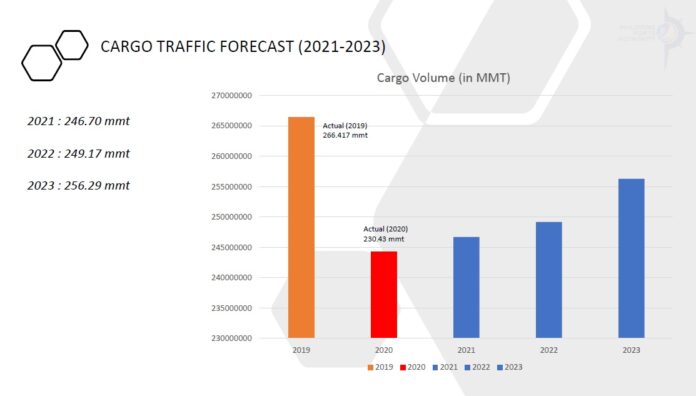-
Cargo volumes are expected to grow by 7% this year, and by 1% and 3% by 2022 and 2023, respectively
-
Philippine Ports Authority general manager Jay Daniel Santiago said the rise in cargo volumes will depend on easing of people’s movements, as this can bump up and drive domestic consumption
-
PPA expects passenger traffic to improve by 1% to 2% this year after sinking 70% to 24.79 million in 2020
The Philippine Ports Authority (PPA) is “optimistically conservative” about cargo volumes from this year until 2023, with expectations especially this year and next hinged on the continued easing of COVID-19 restrictions.
A 7% growth is projected in 2021 after a double-digit slide in the previous year. In 2022, volume is seen rising by 1% and in 2023, by 3%, PPA general manager Jay Daniel Santiago said in an online press briefing.
He noted cargo volume increases will depend on the easing of people and cargo movements, as these improve domestic consumption, the country’s main growth driver.
“Hanggang hindi nareresolba yung easing up of movement ng mga tao at ng mga kargamento, medyo mahihirapan tayong ibalik yung volume ng traffic ng mga kargamento natin doon sa pre-pandemic level (Until the movement of people and goods is eased, it will be difficult to see the return of cargo traffic volume to pre-pandemic level.),” Santiago said.
Cargo volume will rise to 246.7 million metric tons (mt) in 2021 from 230.44 million mt in 2020. For 2022 and 2023, volumes are forecast to hit 249.17 million mt and 256.29 million mt, respectively.
In terms of passenger traffic, PPA projects a 1% to 2% improvement this year after a 70% decline in 2020 to 24.79 million.
For 2021, passenger traffic is seen rising to 25.84 million, which Santiago noted is “way below the pre-COVID-19 traffic of almost 84 million passengers annually.”
For 2022, passenger traffic could hit 26.10 million, and for 2023, 26.79 million.
Santiago said the growth forecasts are consistent with assumptions of the government’s economic cluster.
Cargo volume sank 13.5% in 2020, with the biggest contraction recorded in Manila ports, which account for 85% of the country’s total volumes.
Santiago noted volumes in South Luzon, the Visayas, and Southern Mindanao posted minimal decreases, while Northern Mindanao recorded a positive deviation.
“This is a very good indication that the economy is doing just fine and can easily rebound to pre-COVID-19 levels once we roll out our vaccination program as such could get back investor confidence in our supply chain.”
Santiago is hopeful that with the government’s vaccination program having started, movements of people would be eased and consumption would increase.
PPA last year said it expected ship calls and cargo volumes to decline amid the COVID-19 pandemic, which has significantly affected global and domestic trade, restricted movements of goods and people, and caused economic slowdowns worldwide. Ports in the Philippines remained operational even during lockdown periods and movement of cargoes was mostly unhampered.
Preliminary data from PPA’s website showed foreign and domestic cargoes, container traffic, shipcalls, passenger volume, and roll-on/roll-off traffic all recorded declines. – Roumina Pablo





